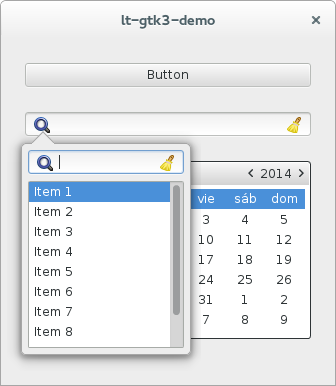You have to hand it to GNOME; for all the initial concerns and criticisms their visual overhaul is really starting to come together.
From the more obvious changes like the new ‘header bars’ that combine toolbars with title bars, and the dropping of ‘minimise’ and ‘maximise’ buttons, to the less apparent tweaks, like new widgets and container styles, and support for super high-resolution displays.

Tying together a coherent visual style for traditional pointer-based interaction and the trend du jour of touch inputs is hard work, but GNOME seems able to marry the two approaches beautifully.
So what’s next?
Pop Over Dialogs
The latest feature to be debuted is something that’s long been on many developers’ wish lists: pop-over dialogs.
Anyone who’s ever toyed with Mac OS X or elementary’s Pantheon desktop shell will find them familiar.
In the simplest of terms pop-overs are better looking menus. But unlike traditional menus pop-overs aren’t limited to just one type of interaction, or a defined “toolbar” area. They offer interactive and contextually relevant input elements that can be tied to a specific button, item or picker.
For example, a pop-over date selector could appear when adding a new calendar entry or, when a word is highlighted, a pop-over showing a dictionary definition may be shown.
Or a specific menus tied to specific areas of an app that only appear when needed – no being shunted to a different window to make a simple input action. It makes sense, and it looks good.
Convenience is only part of their advantage, explains GNOME developer Matthias Clasen on his blog. Popover menus are, he says, also ‘much easier to interact with using touch‘. With touch-enabled laptops and desktops on the increase it’s great that GNOME have been addressing potential interaction concerns from the get-go.
As shiny as they are you can’t play with them just yet. Having only just been merged, popover dialogs are yet to be used in any of GNOME’s core apps. As documentation comes together I expect that we’ll see a swathe of app developer start to use them.
Now GNOME, about that icon theme…
- Source: And Now, PopOvers
